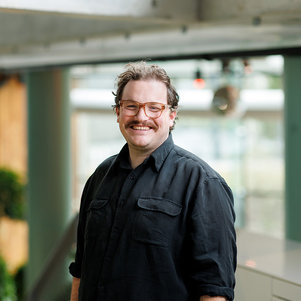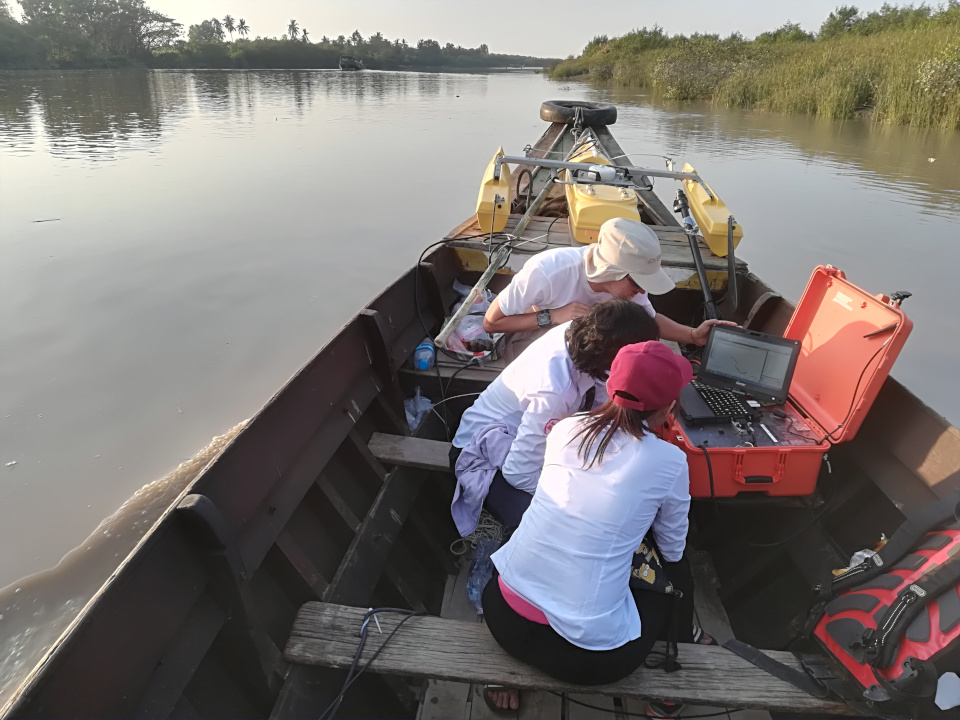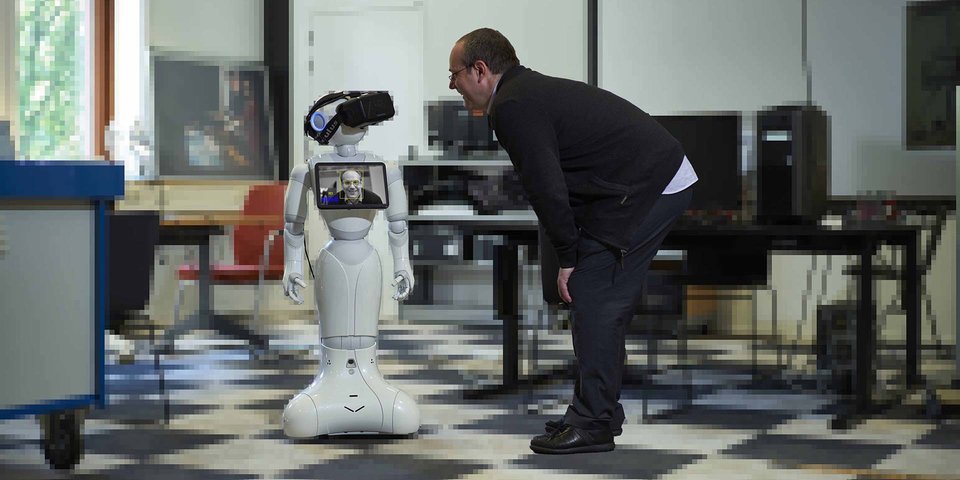Climate change is making urban development in vulnerable delta regions increasingly complex and potentially risky. How can you develop real estate that can withstand flooding and is at the same time affordable? In the RED&BLUE research programme, Zac Taylor, assistant professor in Management in the Built Environment, is working with relevant actors from the entire playing field on improved climate risk assessment and strategies for responsible investments.
Climate change is increasingly revealing the vulnerability of the built environment. Flooding caused by extreme rainfall or sea level rise has a disruptive effect on society, explains Zac Taylor. “Growing damage to homes, business, and communities represent a significant challenge. This is reflected not only in material damage with a price tag. Many people are bound to the place where they live. So it also has an impact on our identity”.
Taylor speaks from experience. He grew up in Florida, a state that - in part due to climate change - is being increasingly battered by violent natural events. “I know what it means to live in a place that is vulnerable to natural disasters and where these tension can constantly be felt. Last year, I saw the disastrous consequences of Hurricane Ian with my own eyes. That reminded me once again of what motivates my research: nobody should have to deal with such losses and instability”.
I know what it means to live in a place that is vulnerable to natural disasters and where these tension can constantly be felt.
Buildings decrease in value
Besides social consequences, climate change also has a major economic impact, adds Taylor. “If buildings become damaged or are assessed as being vulnerable, they lose their value. This affects the potential use and value of neighbourhoods and even entire regions. The major challenge of my specialisation is how we can live in vulnerable delta regions responsibly and affordably. And how we can find a balance between the ecological, economic, and social dimensions in doing so”.
High risks mean high costs
According to Taylor, real estate investors and insurers play an important role in the realisation of a climate-proof built-up environment. “Construction in vulnerable areas such as Florida can involve major risks. These risks must be managed. That is often done with the help of insurance or expensive building approaches. As a result, real estate in these regions is becoming unaffordable for increasing numbers of people”.
Financial institutions use risk assessments to determine where they wish to invest or provide insurance and what the costs will be for the end users. One of the problems is that international models for risk assessment cannot yet be effectively used for local risk levels in the Netherlands, explains Taylor. “Many existing models do not sufficiently factor in measures that are already being taken, such as dams and water barriers. If you were to include this information, it could lead to a different risk profile and very different cost implications – and therefore adaptation needs and opportunities”.
RED&BLUE research programme
According to Taylor, the management of climate-related risks for real estate and infrastructure in vulnerable regions require well-founded design and investment decisions based on integrated strategies. That is why TU Delft initiated the RED&BLUE research programme, a partnership between knowledge institutions, government bodies, companies, and financial institutions. “We focus on strategies for new construction as well as existing construction. The overarching goal is the realisation of a transition to a resilient system of real estate, including regulations, planning, design, construction, and financing."
Improved knowledge sharing between parties
“Integrated knowledge is necessary to develop effective strategies”, explains Taylor. “For example, about the types of climate-related and financial risks, their interrelationships, and all the associated uncertainties. The problem is not so much that the parties do not have the required knowledge, but rather that this knowledge is at present not being sufficiently shared and linked”.
Due to this fragmentation, much of this existing knowledge turns out to be not ‘fit for purpose’ says Taylor. “We have to transition to a knowledge-sharing ecosystem in which the information becomes available in such a manner that it can be used in decision-making, planning, and design”.
Speaking the same language and understanding each other
Integration specialists have been appointed in order to facilitate the dialogue between the parties involved. Taylor: “Their task is to think about how they can bring together all the perspectives and interests and convert this into a shared concept. The most innovative part of this project is building bridges between disciplines and sectors”.
In order to do this effectively, everyone must first take a step back, according to Taylor. “You first have to know how a specific discipline perceives the problem. That starts with the definitions of concepts. For an investor, a word such as ‘risk’ or ‘value’ may mean something quite different than it does for an engineer or sociologist”.
Different types of research
RED&BLUE is subdivided into seven ‘working packages’. Taylor: “The first four of these are focused on research, for example on technical solutions, governance and policy, the analysis of climate risks, and the assessment of financial and economic risks. We then try to link these aspects with each other”.
As an example, Taylor refers to the flood risk for a building or neighbourhood. “This is a technical as well as a financial and political problem. Making a building flood-proof often costs a great deal of money. If it is not clear how we can finance and implement these measures on a large scale, it becomes a major societal challenge. Then we have to think about solutions in the surrounding area: for example, can we temporarily store excess water elsewhere? But then the space must be available to do so. And that again brings practical challenges with it”.
The most innovative part of this project is building bridges between disciplines and sectors.
Meetings with the parties involved
The last three packages focus on the organisation of the cooperation, explains Taylor. “Each year, we organise a multi-day meeting where all the parties involved come together. At the meeting, we look back at what has been done and evaluate the progress of the project. How is the cooperation going? What can we improve?”
In addition, every now and then we have ‘focal point meetings’. Taylor: “These are meetings in which scientists and partners from the field discuss a specific topic. The first one took place this spring, which involved real estate institutions and deals with assessing climate risks. The focus was also on knowledge sharing with other countries (including Singapore and the US), and municipalities will work together with researchers in a living lab in the regions of Amsterdam and Rotterdam”.
Helping new generations of leaders
Taylor hopes that the programme will, in the end, lead to a broad set of guidelines and tools. “Not only in order to be able to prepare a robust climate risk analysis but especially how to use it when making investment and policy choices. And how we can all engage in a transparent discussion of the matters at hand”.
This approach can help new generations of leaders to assess problems more effectively and develop solutions together, says Taylor. ”Regardless of whether these leaders are in politics, science, or the business community. We have to drastically adapt our mindset in each sector. That is perhaps the greatest challenge of all”.
This story is published: June 2023
More information
Zac Taylor is researcher at the Faculty of Architecture and the Built Environment in the department Management of the Built Environment (MBE). He is also the academic coordinator of the “Delta System” theme at the Resilient Delta initiative, which focuses on design, engineering, and investment solutions for the Greater Rotterdam delta region.
Zac is one of the three project leaders of the RED&BLUE research programme. The kick-off took place in September 2022.













